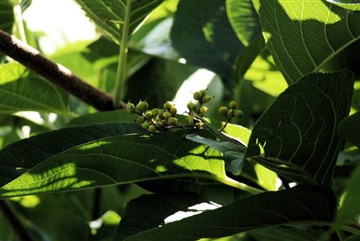Follow Us:

Insecticidal Range Of Picroderm Pesticide
Paretin can control vegetable pests such as cabbage caterpillar, rice pests such as rice budworm, armyworm, rice leaf roller, stored grain pests such as rice weevil and corn weevil, and tree pests such as inchworm. To prevent and control cabbage caterpillar, you can use 50-70 ml of 1% emulsifiable oil mixed with water and spray it with water to control rice bract insects and armyworms. Spray 2000-3000 times of 1% emulsifiable oil to prevent and control inchworms. Spray 2000-3000 times of 1% emulsifiable oil . 1. Insecticidal range of phyllotine pesticides 1. Insecticidal range Phyllanthine can control vegetable pests (such as cabbage caterpillar, etc.), rice pests (such as rice budworm, armyworm, rice leaf roller, large borer, Chiloborer, Chiloborer, etc.), stored grain pests (such as rice weevil, corn weevil, etc.), and can also control pests (such as inchworms) on green trees such as Sophora japonica and Sophora japonica.
2. How to use (1) Prevent
The scope of insecticidal action of phaerine pesticides, with advantages and disadvantages
Answer Paleothorax can control vegetable pests such as cabbage caterpillars, rice pests such as rice budworms, armyworms, and rice leaf rollers, stored grain pests such as rice weevils and corn weevils, and tree pests such as inchworms. To prevent and control cabbage caterpillar, you can spray 50-70 ml of 1% emulsifiable oil with water to control rice bract insects and armyworms. Spray 2000-3000 times of 1% emulsifiable oil to control inchworms. Spray 2000-3000 times of 1% emulsifiable oil .
1. The insecticidal range of picroderm pesticides
1. Insecticidal range
Phyllostachysin can control vegetable pests (such as cabbage caterpillar, etc.), rice pests (such as rice budworm, armyworm, rice leaf roller, large borer, rice stem borer, rice stem borer, etc.), stored grain pests (such as Rice weevils, corn weevils, etc.), and can also control pests (such as inchworms) on green trees such as Sophora japonica and Sophora japonica.

2. How to use
(1) To prevent and control cabbage caterpillars, spray 50-70 ml of 1% emulsifiable oil mixed with water per mu. Spraying can also prevent yellow shougua and turnip sawfly larvae.
(2) To control rice budworm and armyworm, spray 2000-3000 times of 1% EC.
(3) To prevent and control inchworms, spray 2000-3000 times of 1% EC.
(4) To control stored grain pests, add 12-16 ml of water to 0.5% microemulsion for every 100 kg of raw grain, and then mix with appropriate amount of water for even spraying; or mix in root bark powder, and the dosage is 0.4-0.6% of the weight of raw grain.
2. Advantages and disadvantages of picroderm pesticides
1. Advantages
(1) It will not pollute the environment, and its efficacy is 10-15 days longer than that of general plant sources and biopesticides, and it is non-toxic and harmless to humans and livestock.
(2) Compared with ordinary plant sources and biopesticides, the drug overcomes the shortcomings of slow effect, no contact effect, easy photolysis, and easy oxidation, and has the functions of stomach poisoning, contact killing, fumigation, repelling, and anesthesia .
(3) For crustacean pests and pests with a thick wax layer, it has a broad-spectrum and repellent effect.
(4) It overcomes the problem of slow onset of action caused by the natural absorption of the medicinal liquid by the insect body, and the disadvantage of no stomach poisoning due to the refusal of the pest to feed.
2. Disadvantages
(1) It cannot be mixed with alkaline substances, and pests will develop resistance after long-term use.
(2) It has certain toxicity to aquatic animals.


















